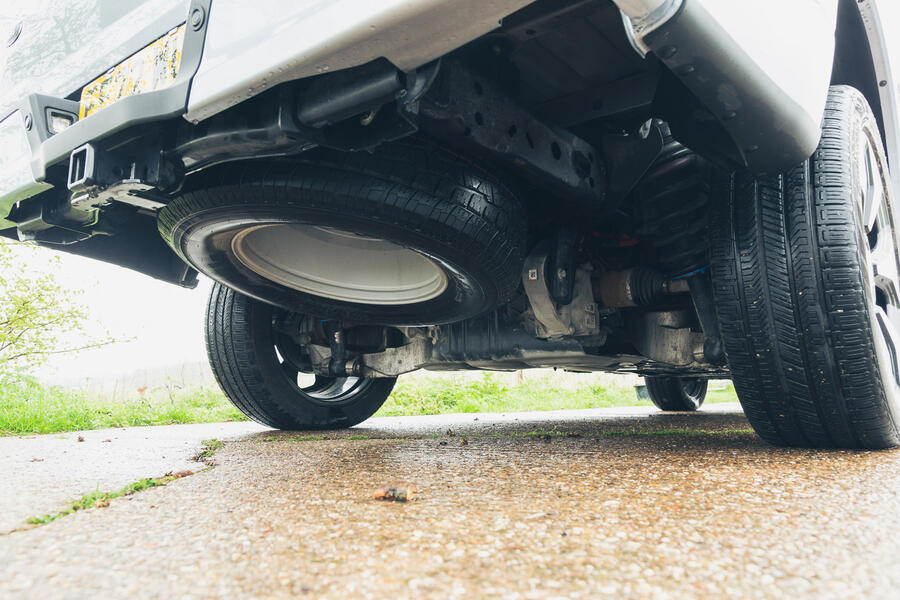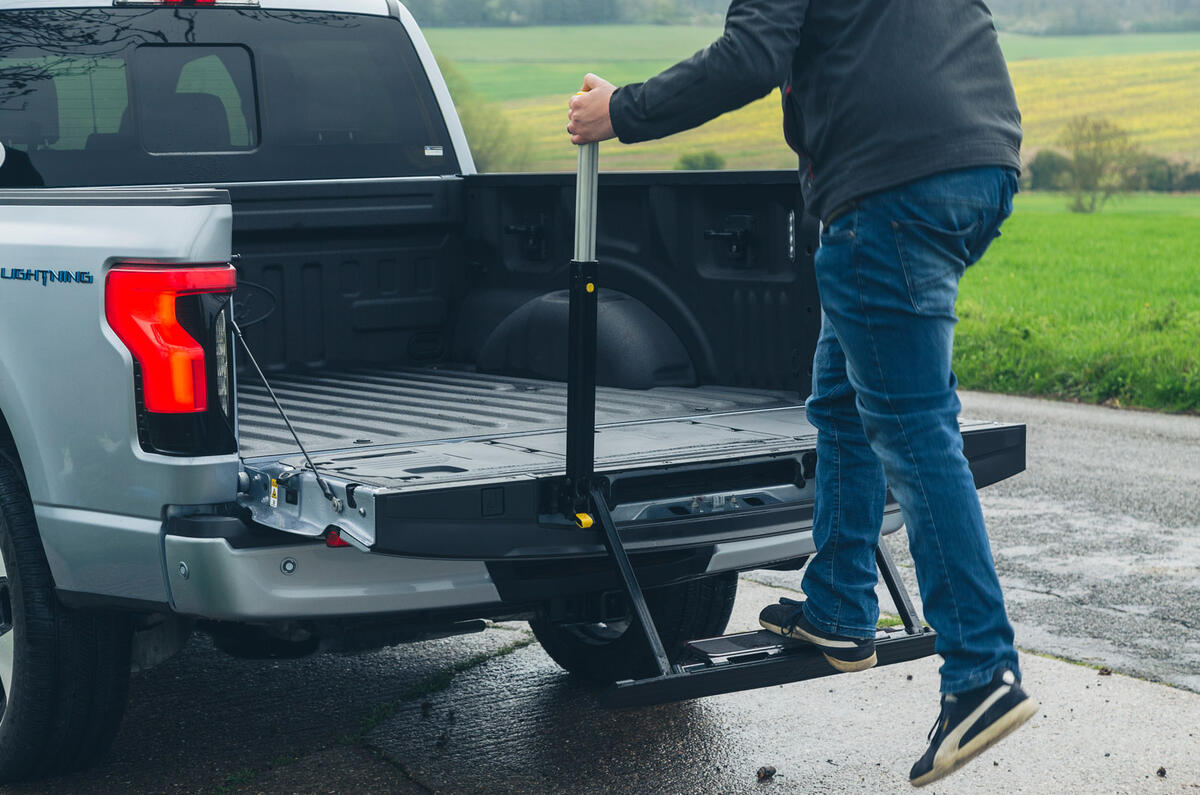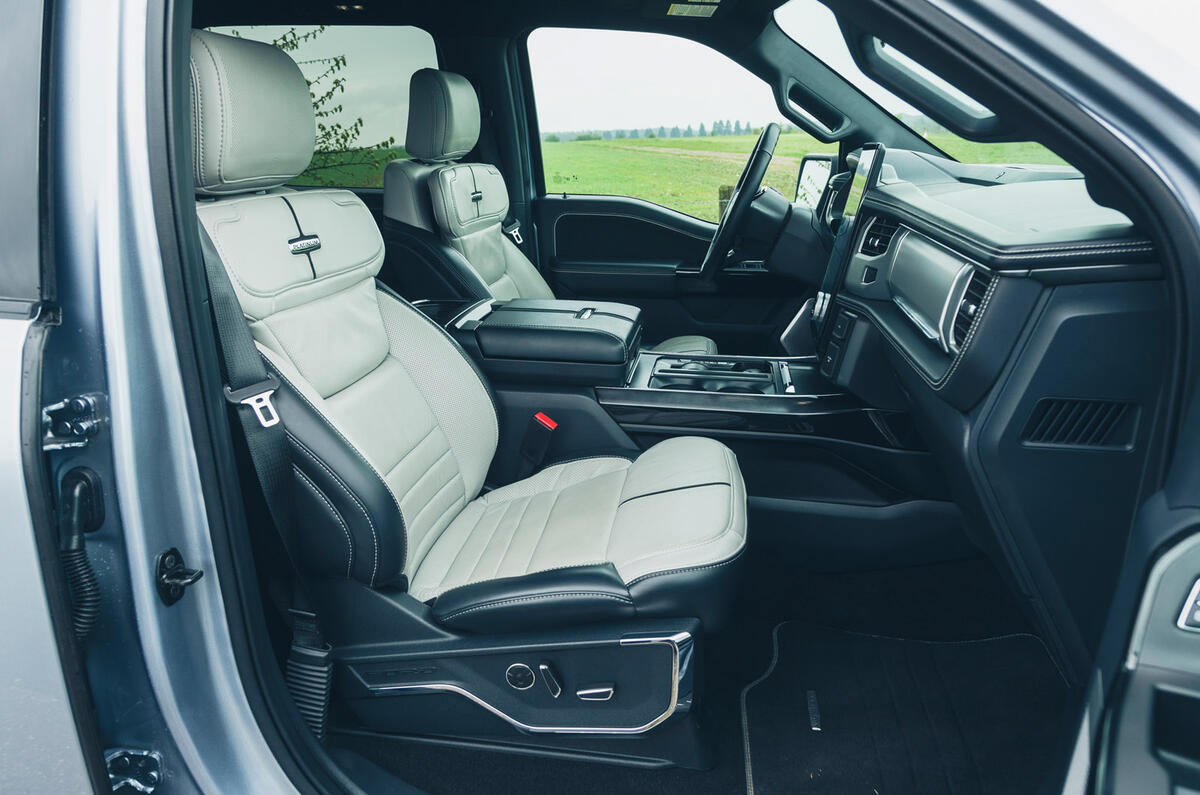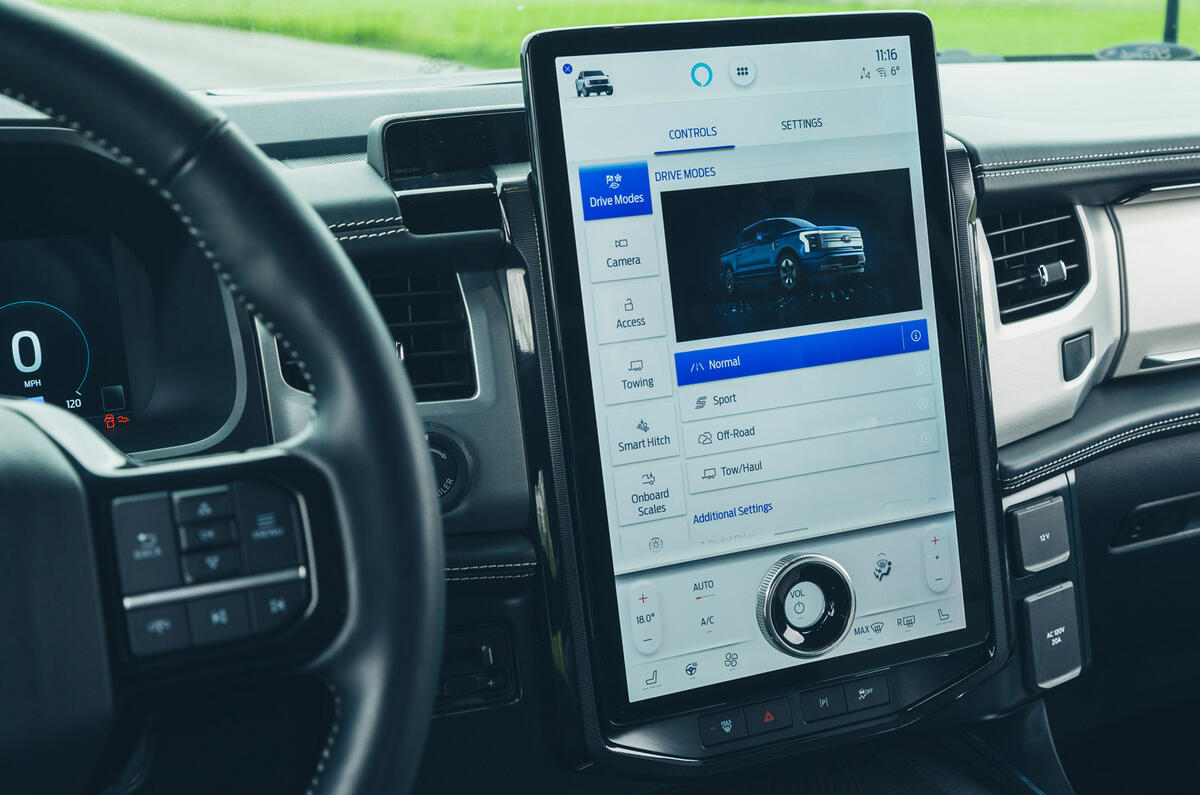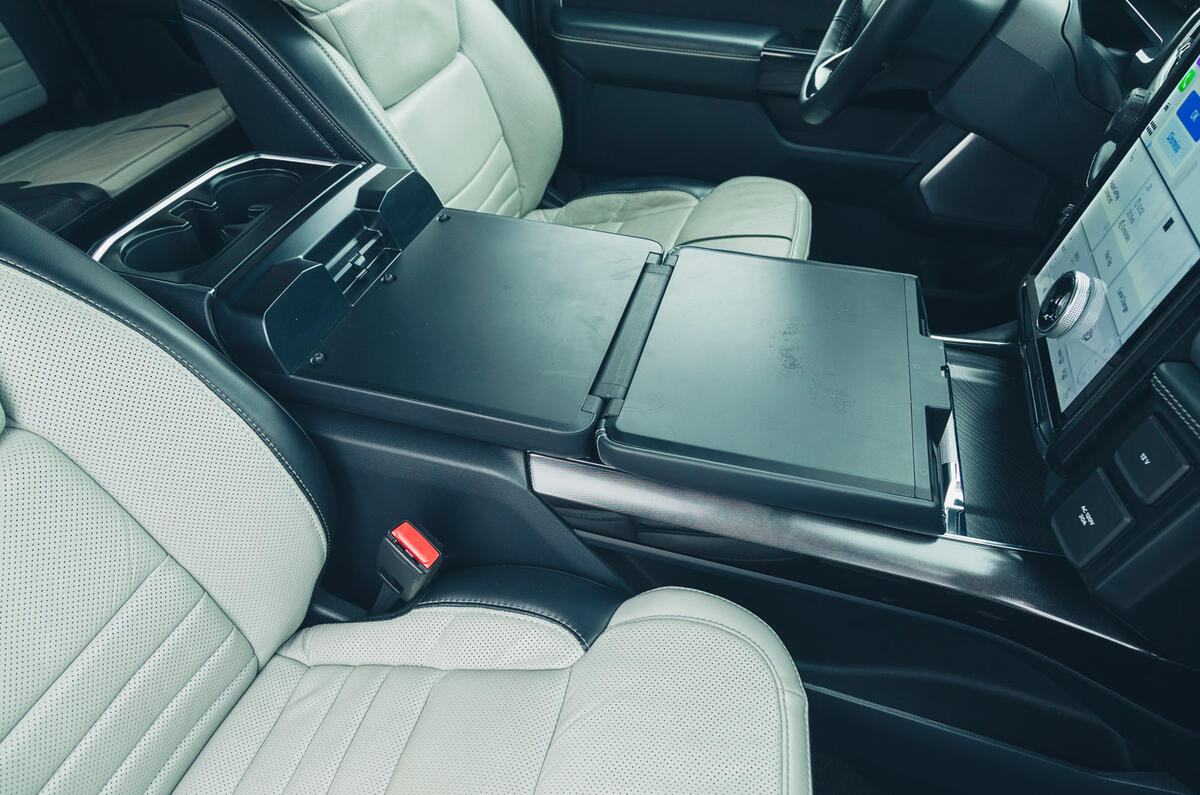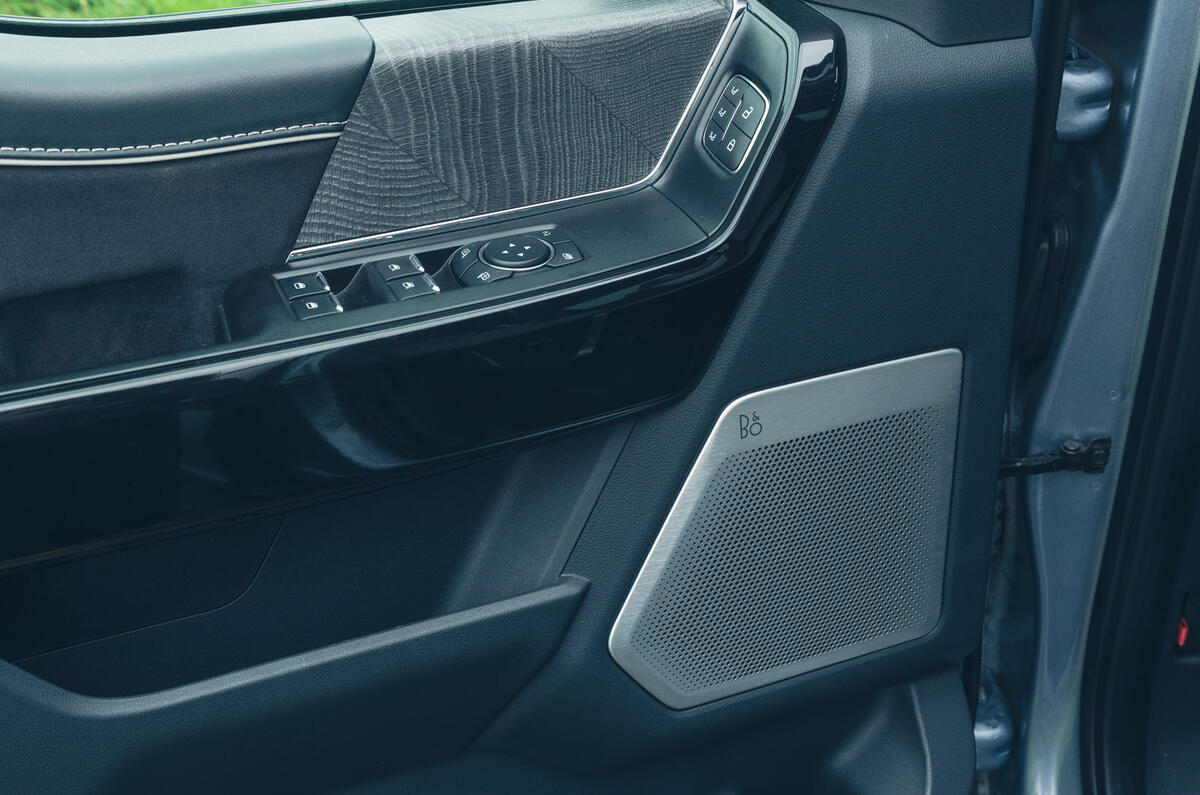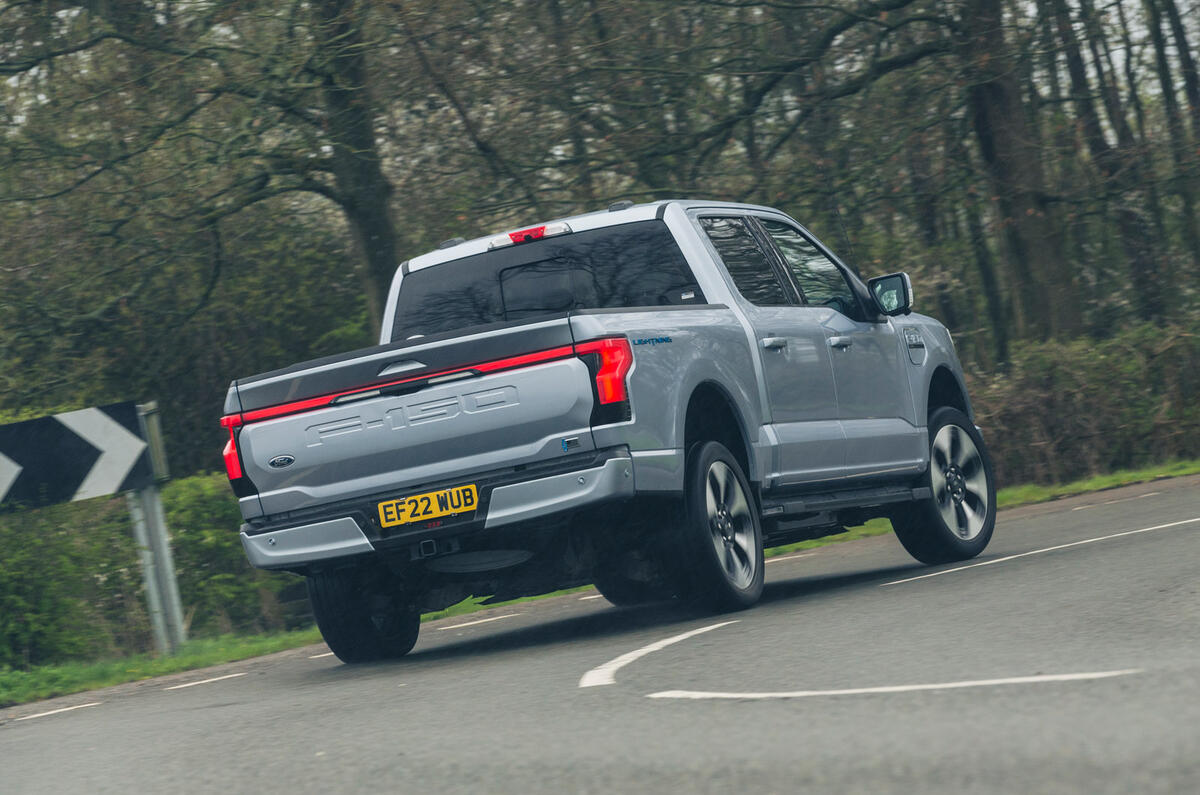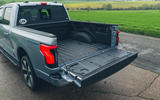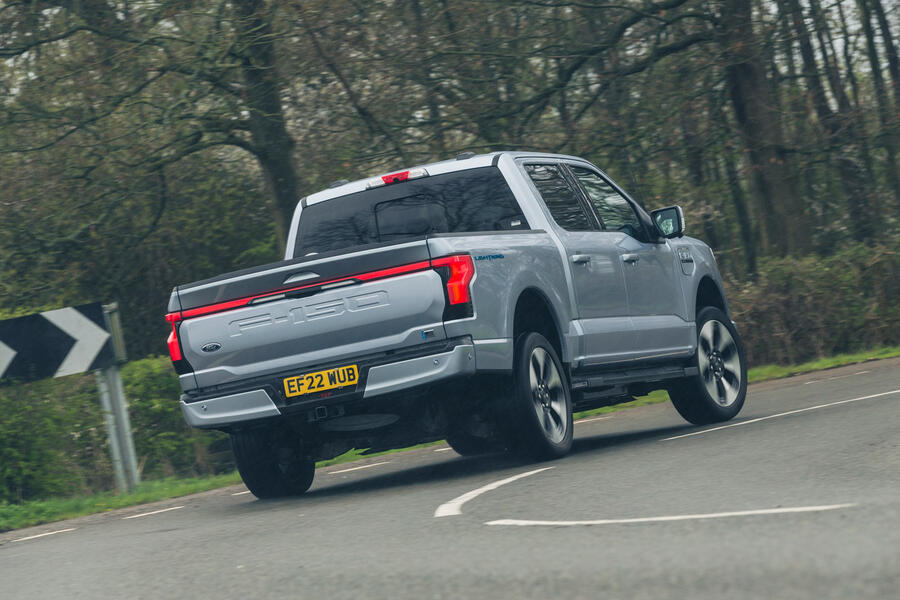Wherever your vantage point, it is impossible to escape the sheer scale of the F-150.
Even taller drivers will clamber up into the driver’s seat via the running board to settle into a broad, soft and adjustable driver’s seat that is separated from its passenger-side equivalent by a centre console wide enough to convert into an effective picnic-table-cum-office-desk when you need it to.
The glasshouse around you feels vast but makes for great visibility. The door mirror tips outboard of it have a span of 2440mm (Rolls-Royce Cullinan, 2180mm). Room for extremities in the front row is well beyond generous, and in the back you will find only 10mm less knee room than we measured in the BMW i7. Added to all that, you get an adjustable pedal box to boost driver leg room, as only an NBA power forward would require, and enough cabin storage to make even the cleverest MPV seem under-provisioned.
In terms of its cargo space at least, the Lightning is practical well beyond even the standards of its peers. And so, in addition to the 1.7-metre-long, 1.5-metre-wide flatbed in the back (which has a powered tailgate that doubles as a step), there is a full-width storage cubby under the flip-up back-seat cushions that’s big enough to swallow grocery bags and the like.
The crowning glory is the Lightning’s powered ‘frunk’, which opens up electrically to reveal a 408-litre storage area right where the burbling V8 would otherwise be. It will take full-size suitcases, and it’s waterproof and fitted with drainage holes, so you can use its lower recess to keep drinks cold when parked. And, like the cab and flatbed, it’s provisioned with a peculiarly generous number of ‘mains’ power outlets.
There are nine 120V outlets dotted around the F-150 Lightning, plus one 240V one in the flatbed. Between them, the vehicle can supply up to 9.6kW of power when parked on a work or camping site: enough for a number of power tools to draw from that 131kWh battery.
Back in the cab, the Lightning goes large with its 15.5in portrait Sync 4A touchscreen infotainment screen and its digital instruments. The cabin materials look and feel a little plain in places, but they don’t make it too hard to convince yourself that you’re travelling in a comfortable and very well-provisioned, modern luxury vehicle.
Multimedia system

Upper trim levels of the F-150 Lightning get as standard the Sync 4A 15.5in portrait-oriented touchscreen infotainment system also seen on the Ford Mustang Mach-E, as well as the latest Ford Ranger Raptor.
When we have tested it on those models, it has attracted some praise for its usability, although it does integrate some controls on the screen that we would rather see physical switchgear for. In the case of the F-150 we tested, however, the system still had its North American settings for satellite radio and navigation, so we couldn’t explore it fully (hence the absence of a star rating).
The system does offer wireless smartphone mirroring for both Apple and Android handsets, as well as wireless device charging. It took a few attempts to connect to an iPhone, and suffered with a slightly glitchy connection thereafter, but worked okay for the most part.
